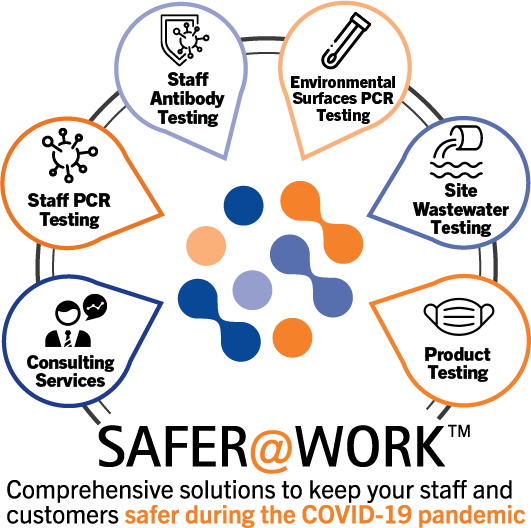
Technology continues to advance at an exponential rate, with many brands reimagining new ways of working and the launch of Web3 which will change the internet as we know it. In this article, we explore the top technology trends to watch out for in 2022.
Throughout 2021, we saw a fresh influx of new technologies and trends hitting the mainstream. The biggest announcement came from Meta (formerly known as Facebook), who are beginning work on the metaverse. Using Web3 technology, the metaverse is a digital network of 3D virtual worlds focused on social connection and social interaction, combining augmented reality (AR) and virtual reality (VR) with NFTs blockchain technology.
2022 is already shaping up to be an exciting year for many industries, providing new opportunities to connect and engage with customers in new ways.
Web3 (also known as Web 3.0)
What is Web3?
Web3 is the next step in the evolution of the World Wide Web. It is decentralised digital ecosystem based on the blockchain.
To provide more of an overview, Web1 was the first generation of the World Wide Web. It consisted of decentralised, open protocols which mostly involved navigating to individual static webpages. You couldn’t do much except from read and publish content.
Web2, which is active in today’s World Wide Web, uses JavaScript programming language, which provides dynamic and responsive web applications. Web2 is centralised with most communication and commerce taking place on closed platforms owned by a handful of powerful tech corporations like Google, Amazon, and Meta (formerly known as Facebook).
Web3 is a decentralised digital ecosystem based on the blockchain. Platforms and apps built on Web3 will not be owned by a gatekeeper, giving the data and power back to the individual users and lessen the monopolistic control they currently have.
What can you do on Web3?
With Web3, users can contribute to the governance and operation of protocols themselves rather than using free platforms in exchange for the user’s data. These shares are called tokens or cryptocurrencies, they signify ownership of decentralised networks known as blockchains. Anything can be a token, whether it’s a piece of digital art, a meme, or digital real estate.
Example of Web3
A good example is in the gaming industry. Gamers endlessly complain about the bugs in video games or how the latest patch has changed the balance of their favourite weapon. With Web3, players can invest in the game itself and have a say on how things should be run. Large Web2 companies, like Ubisoft and Meta, are creating virtual worlds powered by Web3. NFTs (non-fungible tokens) will also play a huge part in reshaping the gaming industry by enabling players to become immutable owners of the items they accumulate.
With its huge potential, Web3 is sure to be the forefront over the next decade.
The Metaverse
What is the metaverse?
As touched on earlier in the article, large technology companies, such as Microsoft and Meta, are currently in the very early stages of developing the metaverse. Using Web3 technology, the metaverse is a digital network of 3D virtual worlds focused on social connection and social interaction.
The metaverse combines augmented reality (AR) and virtual reality (VR) with NFTs blockchain technology. Think “Ready Player One”, a sci-fi novel about a dystopian future set in 2045 that follows Wade Watts a character on a quest to find an Easter egg hidden deep within a worldwide virtual reality game.
While an extended reality metaverse is still 3-5 years out, we are starting to see the building blocks released with many brands being put on alert to prepare for the metaverse.
Example of the Metaverse
An example of the metaverse is The Sandbox, a blockchain-based video game known for NFT virtual land sales. One recent virtual plot of land was recently bought for a record of $4.3million by Republic Realm, an organisation who calls itself a “digital real estate company” on behalf of Atari, a well-known video game company.
Retail giants, Nike and Adidas, both recently purchased virtual plots of land in the metaverse. Another big retail brand, H&M, recently opened its first store in the metaverse.
The metaverse provides the opportunity for brands to reimagine virtual experiences and find better ways to build communities among customers, experience physical goods virtually and to create more personal, AI powered concierge- style services.
Blockchain Adoption Will Continue to Increase
Blockchain powers cryptocurrencies like Bitcoin and allows software developers to integrate the technology into their products for more secure and reliable transactions. Blockchain is a distributed database that can be used as a register for keeping secure track of transactions.
It is a system of recording that makes it extremely difficult to alter or hack. When a user adds a new data record (block), a timestamp that cannot be changed. Each time a new transaction occurs on the blockchain, a data block is added with the record of that transaction is added to every participant’s ledger.
Distributed ledger technology, or blockchain, is a decentralised virtual ledger that records transactions across P2P (peer-to-peer) networks. The network of computers around the world running blockchain software can approve transactions by consensus, making it far more democratic than financial system infrastructure that exists today. Distributed ledger technologies have the potential to ensure faster, more secure, and more efficient transaction processing at lower costs for both financial markets participants and regulators.
The telephone took 76 years to be adopted by half of the US population. In comparison, the smartphone took under ten years.
We are now witnessing blockchain technology shift from a notebook draft sketch to an established technology in a fraction of the time the internet took to be accepted as an everyday tool. Technology driven change is so prevalent that no industry is immune.
Improving Cybersecurity with DevSecOps
DevSecOps improves software products’ overall safety by combining development, security, and operations.
DevSecOps enables the detection of security risks before they can become problems as well as the prompt fixing of vulnerabilities after they’re discovered.
The silos between development, security and operations will continue to reduce as developer-led enhanced security practices become the norm for cloud-native organisations.
This doesn’t mean that every traditional organisation and enterprise will shift security and adopt these security best practices. It will, however, provide them with competitive advantages over those who don’t with a decrease in cyber security costs and an increase developer productivity, impacting time-to-market and profit potential.
Cloud-Native Technology Will Continue to Lead
Many software companies have chosen to focus solely on cloud-native technology. When using a Cloud-native architecture, software products are more scalable and efficient when operating with multiple servers. Not only that, but it also means they can be run from anywhere at any time.
These software systems are designed to be suited for distributed public, private and hybrid clouds.
Benefits of cloud technology:
- Increased security: Encrypted data and zero trust verification have improved cloud security in recent years. Used alongside other methods such as internal mandatory employee education and control of access, cloud computing is no riskier than traditional IT security infrastructure systems.
- Improved products and services: The need for self-service technology has continued to accelerate in recent years. Self-service applications hosted on cloud technology helps organisations deliver an improved service at rapid speed.
- Enhance Scalability: The need for a highly scalable infrastructure is paramount in this digital age. Cloud technology offers the ability to scale quickly and easily while saving on costly on-site infrastructure.
- Innovation opportunities: Cloud computing is an agile technology, without this ability, some of the recent technology advancements would not be possible.
- Data management: For many industries, gathering and interpreting data is a crucial priority. Data is a key driver in many of the decisions large companies make. From administering new applications, lengthy data entry processes and analysis of customer data; companies are using cloud technology to collect and securely store readily accessible large amounts of data.
A recent research report by McKinsey, shows that by 2030, cloud technology will account for EBITDA (earnings before interest, tax, depreciation and amortization) in excess of $1 trillion across the world's top 500 companies.
Increased Progression Towards AI and ML-driven Approaches
Artificial Intelligence (also known as AI) communicates to software that is made to learn from data that make predictions or actions without the need to have a human operator.
AI technology features branches such as natural language processing (NLP). This enables computers to understand and classify human language. The goal of NLP is to build systems that can understand text and automatically perform tasks such as translation, spell checking and grammatical errors or topic classification. It’s an efficient tool that can quickly analyse documents, extract detailed information such as customer information, products, services and processes.
Another increasingly popular branch of AI is ML (machine learning). This is a type of AI that provides data-driven recommendations and predictive analytics to make decisions based solely on the data inputted. To do this, ML enables software applications to study algorithms and historical data to predict the outcomes through experience and by the use of information and data.
Summary
In summary, 2022 is sure to be an interesting year for technology as we continue to witness the crypto boom, the mixing of virtual worlds with reality, heightened cyber security and enhancements in cloud technologies.









